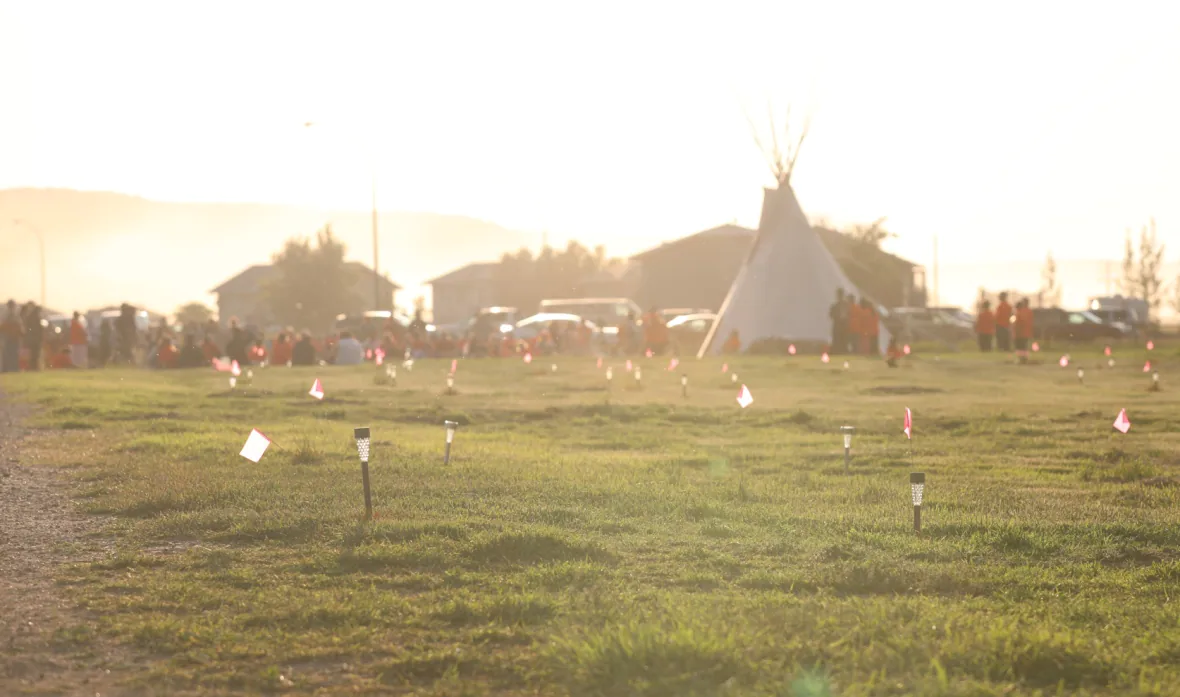
Solar lamps marking each of the discovered unmarked grave - Photo credit: (Mickey Djruic/CBC)
751 unmarked graves were discovered at the site of a former residential school in Saskatchewan, just weeks after the remains of 215 children were found in British Columbia.
The bodies were discovered at the Marieval Indian Residential School, with a search with ground-penetrating radar stating that there was 751 hits. Chief Cadmus Delorme of the Cowessess added that there were at least 600 bodies buried in the area. “We want to make sure when we tell our story that we’re not trying to make numbers sound bigger than they are. I like to say over 600, just to be assured.”
Delorme also reiterated that the findings were not from a mass grave but from unmarked graves where headstones had been removed by representatives of the Catholic Church.
The Cowessess First Nation also said the discovery was “the most significantly substantial to date in Canada”.
Canadian Prime Minister Justin Trudeau tweeted that he was "terribly saddened" by the discovery in Saskatchewan, adding it was “a shameful reminder of the systemic racism, discrimination, and injustice that Indigenous peoples have face”.
In response to the discovery, a vigil was held and attended by dozens of community members.
In Saskatchewan, #Canada, a vigil was held in a field where the bones of 751 Indigenous children were discovered. Canada's Indigenous people see the graves as tangible proof of the tragic stories of boarding schools that had circulated in their communities for more than a century pic.twitter.com/Al9FeD6iIJ
— ANews (@anews) June 29, 2021
Community members and organisers also laid approximately 150 backpacks on the steps of the Saskatchewan legislature on June 28, 2021. Organisers have urged people to gather enough backpacks to display 751 backpacks before Canada Day – representing each of the unmarked graves discovered at the former Marieval Indian Residential School. A candelight vigil has also been scheduled on the day.
The Marieval Indian Residential School was founded and operated by the Roman Catholic Church since 1899 until the federal government shut down everything but the church, rectory and cemetery in 1997, according to the Truth and Reconciliation Commission (TRC).
In 2015, the TRC stated that at least 3,200 Indigenous Children died while in attendance of these schools and administrators generally agreed “not to send the bodies of students who died at schools to their home communities”.
Read more here.

